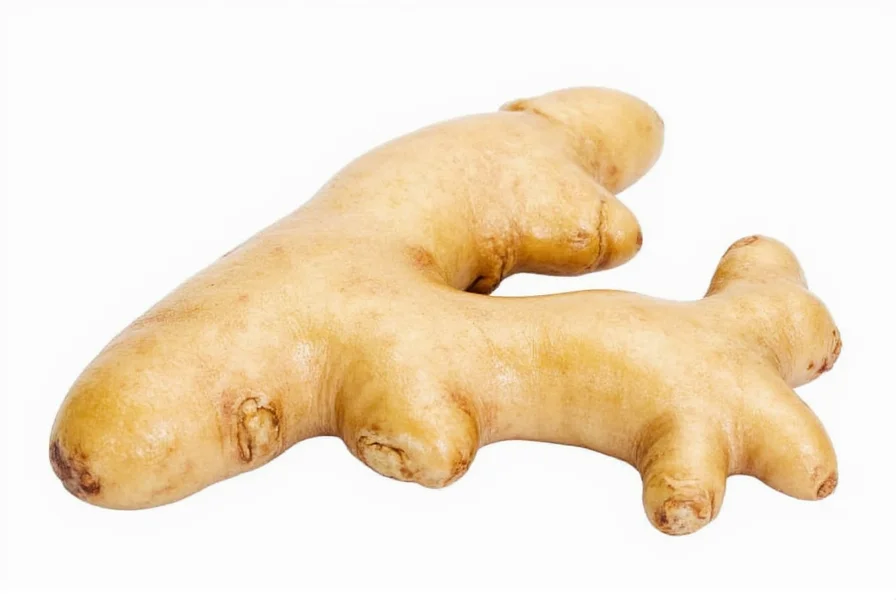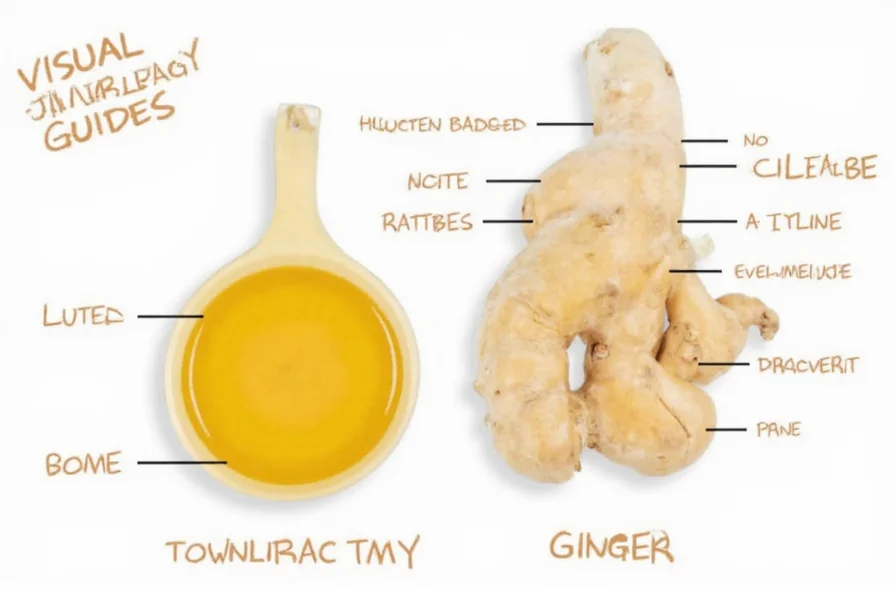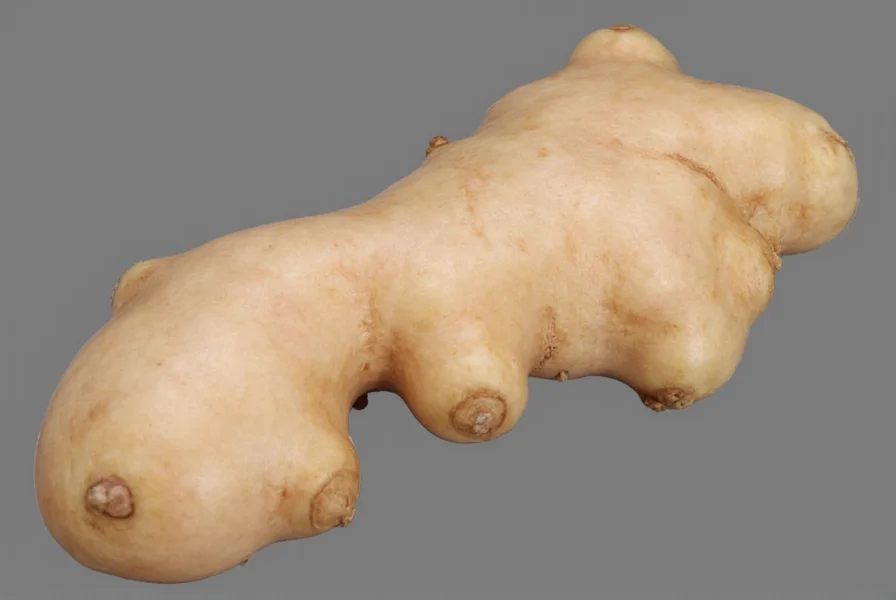Understanding what does ginger look like is essential for selecting quality produce at markets and grocery stores. This distinctive root vegetable has unique visual characteristics that set it apart from other similar-looking rhizomes and roots.
Physical Characteristics of Fresh Ginger Root
When examining fresh ginger root appearance, several key features become apparent. The outer skin ranges from pale beige to light brown, often with a slightly shiny surface when freshly harvested. Young ginger may have a smoother, thinner skin that's almost translucent, while mature ginger develops a thicker, more fibrous, and sometimes slightly wrinkled exterior.
The shape is naturally irregular with multiple branching 'fingers' extending from a central knob. These protrusions give ginger its characteristic hand-like appearance, which is why it's sometimes called 'horned root.' A typical ginger root weighs between 2-6 ounces and measures approximately 3-6 inches in length, though sizes can vary significantly based on growing conditions.

Internal Structure and Color Variations
When cut open, how to identify ginger becomes more straightforward as the interior reveals a consistent pale yellow to light tan color. The flesh should appear moist but firm, with visible fibrous strands running through it. High-quality ginger has a uniform color throughout without dark spots or discoloration.
There are subtle color variations depending on the ginger variety:
| Ginger Variety | External Color | Internal Color | Texture Characteristics |
|---|---|---|---|
| Common Yellow Ginger | Pale beige to light brown | Bright yellow | Firm, moderately fibrous |
| African Ginger | Dark brown | Deep yellow | Very fibrous, dense |
| Indian Ginger | Light brown | Light yellow | Less fibrous, juicier |
| Young/"Spring" Ginger | Pinkish-tan | Pale yellow | Very tender, minimal fiber |
Different Forms of Ginger and Their Visual Characteristics
Understanding ginger root visual description extends beyond just the fresh form. Ginger appears in several preparations, each with distinctive visual properties:
Fresh Ginger
The most common form found in grocery stores, featuring the knobby appearance described above. Look for firm roots without soft spots or mold.
Dried Ginger
When ginger is dried, it shrinks significantly and develops a darker, almost mahogany-colored exterior. The texture becomes hard and woody, requiring rehydration or grinding before use.
Ground Ginger
This powdered form ranges from pale yellow to deep golden brown depending on the variety and processing. High-quality ground ginger maintains a fine, uniform texture without clumping.

How to Select Quality Ginger
When shopping for ginger, use these visual cues to ensure you're getting the best product. First, look for roots that feel heavy for their size, indicating high moisture content and freshness. The skin should be taut and smooth without excessive wrinkles, which can indicate age. Avoid ginger with soft spots, mold, or a grayish tint inside, as these are signs of spoilage.
For culinary purposes, choose ginger with smooth skin if you plan to peel it easily. Some chefs prefer slightly mature ginger with more pronounced fibers for stronger flavor, while others select younger ginger with thinner skin for more delicate dishes.
Common Look-Alikes and How to Distinguish Them
Several roots resemble ginger but serve different culinary purposes. Turmeric has a similar knobby shape but features bright orange-yellow flesh and a smoother, more orange-tinged exterior. Galangal, sometimes called 'Thai ginger,' has a smoother, paler skin and a more cylindrical shape with less branching. When cut open, galangal reveals white or pale pink flesh rather than ginger's characteristic yellow.
Less commonly, some might confuse ginger with wild ginger (Asarum species), which is not edible and has a completely different appearance with heart-shaped leaves rather than rhizomes.
Seasonal Variations in Ginger Appearance
Ginger harvested in spring (often called 'spring ginger' or 'baby ginger') has a distinctive pinkish blush on the tips of the rhizome fingers and exceptionally tender skin that often doesn't require peeling. This seasonal variety is less fibrous and has a milder flavor than mature ginger harvested in fall.
As ginger matures through the growing season, the skin thickens and becomes more fibrous, developing the characteristic beige-brown color most people associate with ginger. The internal color also deepens from pale yellow to a richer golden hue.
Storage Effects on Ginger's Appearance
Proper storage maintains ginger's appearance and quality. When stored in a cool, dark place, ginger retains its firm texture for several weeks. In the refrigerator, wrapped in a paper towel inside a plastic bag, it can last up to three weeks. Over time, ginger may develop small wrinkles as it loses moisture, but this doesn't necessarily indicate spoilage.
If ginger begins to sprout, small green shoots will emerge from the nodes. While still usable, sprouted ginger has diminished flavor intensity. Discard ginger that develops mold, becomes slimy, or shows significant discoloration.











 浙公网安备
33010002000092号
浙公网安备
33010002000092号 浙B2-20120091-4
浙B2-20120091-4